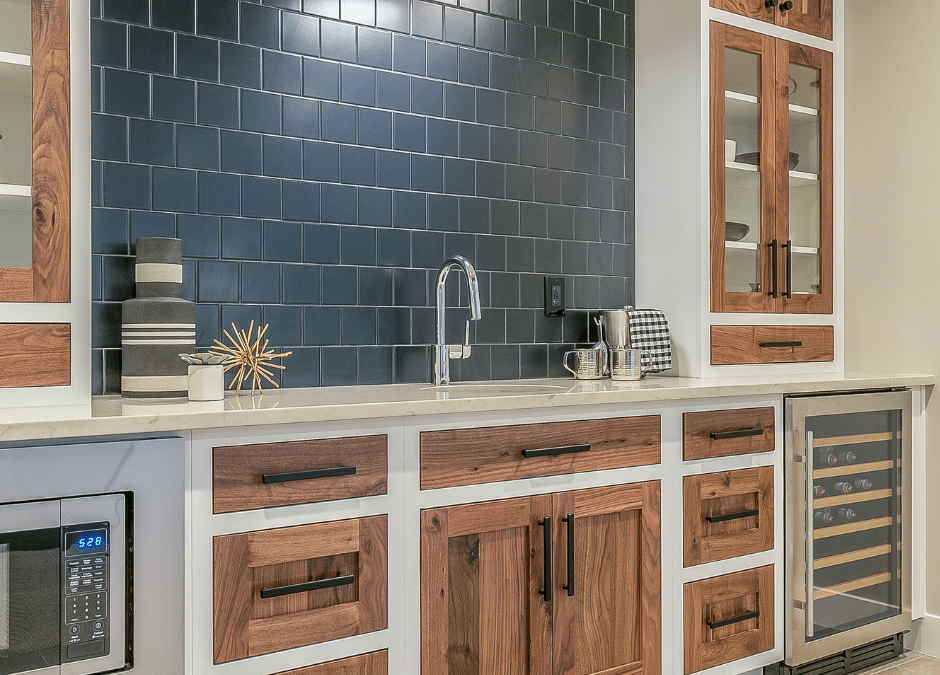
The Perfect Tile Backsplash for Your Kitchen Remodel
When it comes to remodeling your kitchen, a tile backsplash is an essential element that can elevate the overall design and functionality of your space. Not only does it protect your walls from spills and splatters, but it also adds a touch of style and personality to your kitchen. Here’s everything you need to know about choosing and installing the perfect tile backsplash.
Benefits of a Tile Backsplash
Protection and Durability: A tile backsplash shields your walls from cooking messes, moisture, and stains, making it easier to clean and maintain. Tiles are also highly durable and can withstand the heat and humidity of a kitchen environment.
Aesthetic Appeal: With a wide range of colors, patterns, and materials available, you can customize your backsplash to complement your kitchen’s design. Whether you prefer a classic subway tile, a bold mosaic, or a sleek glass tile, there are endless options to express your style.
Value Addition: A well-designed tile backsplash can increase the value of your home by enhancing the aesthetic appeal of your kitchen. Potential buyers often look for modern and stylish kitchens, and a beautiful backsplash can make a significant impact.
Choosing the Right Tile
Material: Popular options include ceramic, porcelain, glass, and natural stone. Each material has its unique characteristics. Ceramic and porcelain tiles are affordable and versatile, while glass tiles offer a contemporary look with a reflective quality. Natural stone tiles, such as marble or travertine, add an elegant and timeless appeal.
Color and Pattern: Consider the color scheme and overall design of your kitchen when selecting tiles. Neutral colors like white, gray, and beige are timeless and versatile, while bold colors and intricate patterns can create a focal point. Mixing different tile shapes and sizes can also add visual interest.
Finish: Tiles come in various finishes, including glossy, matte, and textured. Glossy tiles are easy to clean and reflect light, making your kitchen appear brighter. Matte finishes offer a more subdued look, while textured tiles can add depth and dimension.
Installation Tips
Measure Accurately: Before purchasing tiles, measure the area you plan to cover to determine how many tiles you’ll need. Always buy a few extra tiles to account for cuts and potential mistakes.
Prep the Surface: Ensure the wall surface is clean, dry, and smooth before installing tiles. Remove any old adhesive or paint and fill in any holes or cracks.
Layout and Design: Plan your tile layout before starting the installation. Use spacers to maintain consistent gaps between tiles, and consider using a level to ensure your tiles are even.
Adhesive and Grout: Choose the right adhesive for your tile material and follow the manufacturer’s instructions for application. After the tiles are set, apply grout to fill the gaps. Seal the grout to prevent stains and moisture damage.
Maintenance
To keep your tile backsplash looking pristine, regularly wipe it down with a mild cleaner and a soft cloth. Avoid using abrasive cleaners that can damage the tiles or grout. Periodically check for any loose tiles or grout and repair them promptly to maintain the integrity of your backsplash.
Conclusion
A tile backsplash is a versatile and stylish addition to any kitchen remodel. With a variety of materials, colors, and patterns to choose from, you can create a custom look that reflects your personal taste and enhances your kitchen’s functionality. Whether you’re aiming for a sleek modern design or a cozy traditional vibe, the perfect tile backsplash can transform your kitchen into the heart of your home.
